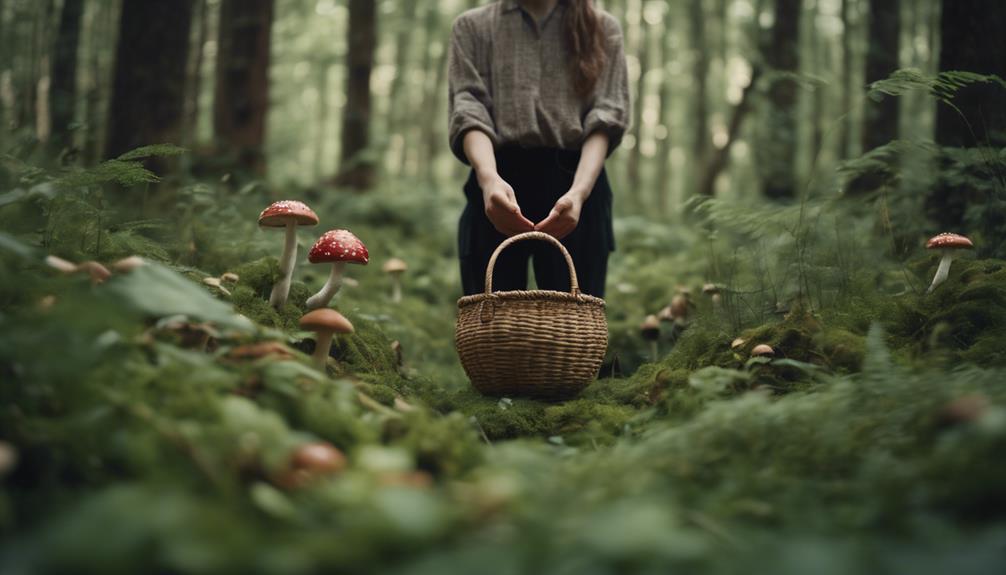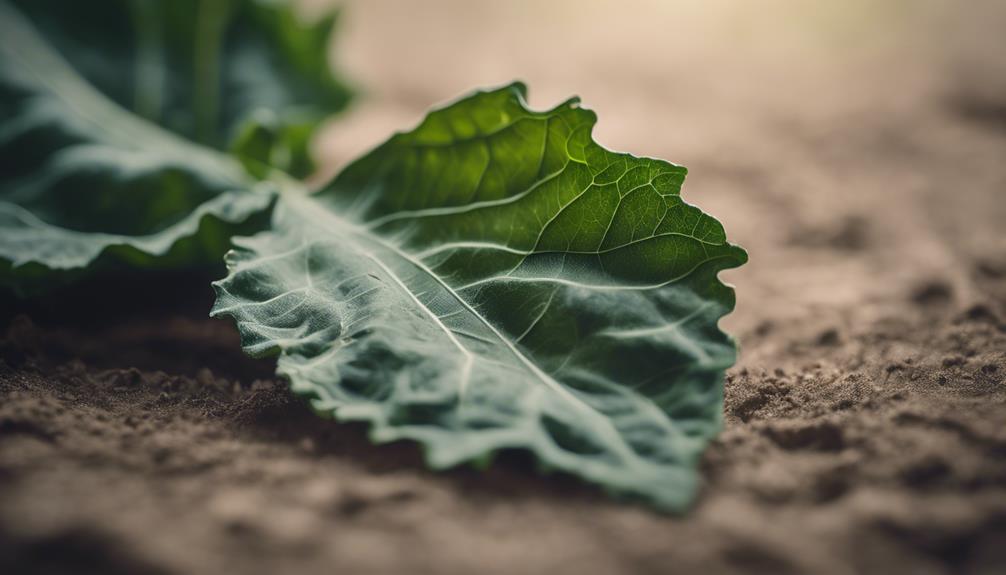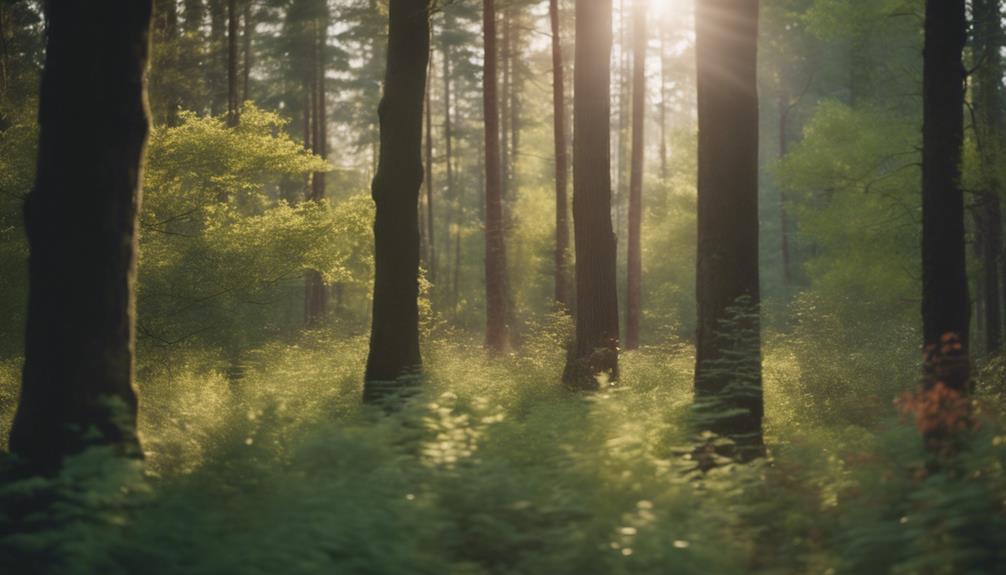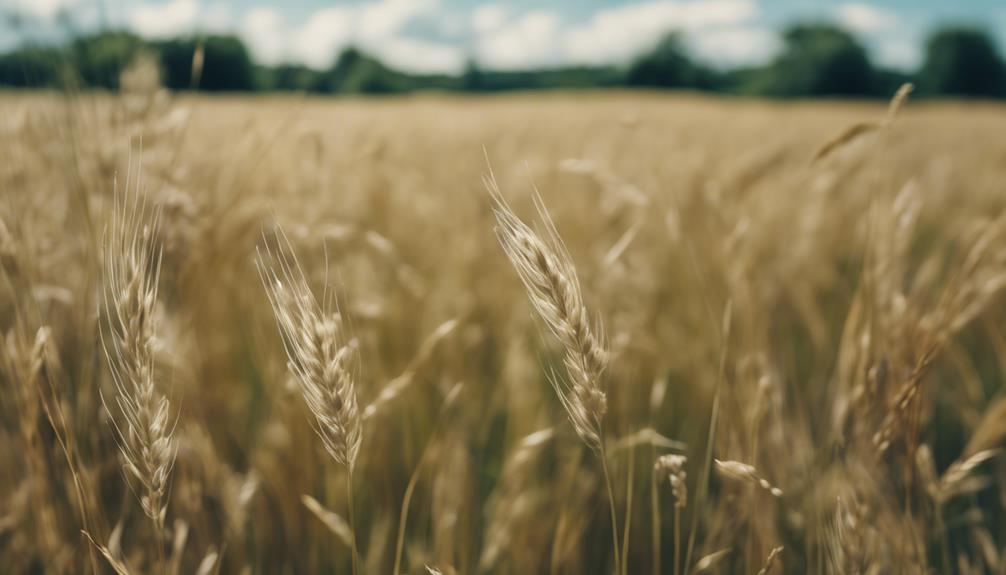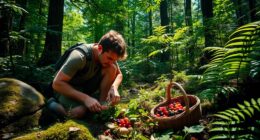You can earn a living foraging for wild edibles, but it requires dedication, knowledge, and adherence to local regulations. With daily income potential ranging from $100 to $300, you'll need to identify the right species, know where to find them, and understand how to preserve and sell your finds. You'll also need to expand your income streams, create value-added products, and adopt sustainable harvesting methods to protect ecosystems. By following these guidelines and staying informed about local laws and regulations, you can build a successful and sustainable foraging business – and we'll explore more ways to make that happen.
Key Takeaways
- Foraging can be a profitable venture, with daily income potential ranging from $100 to $300, but it requires knowledge, dedication, and adherence to local regulations.
- Identifying the right species, knowing where to find them, and understanding how to preserve and sell foraged items are crucial skills for foragers.
- Adopting sustainable harvesting methods and obtaining necessary permissions for foraging activities are essential to protect ecosystems and avoid legal consequences.
- Diversifying income streams, such as creating value-added products, teaching workshops, and supplying restaurants and markets, can help reduce financial risks and increase revenue.
- Building relationships with chefs, buyers, and local businesses, and capitalizing on the demand for unique foraged ingredients, can help foragers establish a sustainable and resilient business model.
Foraging for Profit: Is It Possible?
You can earn a daily income of $100 to $300 by foraging for various edibles and mushrooms, provided you have the knowledge, dedication, and adherence to local regulations. This can be achieved by finding and harvesting wild mushrooms, which are in high demand in the culinary world.
To make money foraging, you'll need to identify the right species, know where to find them, and understand how to preserve them for sale. You can sell your finds to licensed buyers, who'll then resell them to restaurants and markets. Alternatively, you can create value-added products like jams, wines, or dried mushrooms to sell directly to consumers.
With the right skills and knowledge, foraging can be a lucrative venture. However, it's essential to remember that successful foraging requires a deep understanding of the plants, dedication to finding the best spots, and adherence to local regulations. By following these guidelines, you can turn your passion for foraging into a profitable business.
Understanding Local Laws and Regulations

As you begin foraging, you'll need to comprehend the local laws and regulations that govern this activity.
You'll need to research and obtain necessary permits and licenses, and distinguish between public and private land to avoid legal issues.
Permits and Licenses
Before starting on a foraging expedition, it's important to familiarize yourself with local laws and regulations, as permits and licenses are often required to legally harvest wild foods in certain areas. You'll need to understand what permits and licenses are required, as these can vary greatly depending on the region and type of wild food.
In some areas, permits may be required for specific species, while in others, a general foraging license may suffice. Be prepared to pay fees or adhere to specific harvesting restrictions, as these can impact your foraging business. Failing to obtain the necessary permits and licenses can result in fines or legal consequences, so it's crucial to do your research and comply with local regulations.
Take the time to understand what's required in your area, and make sure you're operating within the law. By doing so, you'll avoid potential legal issues and maintain a reputable foraging business.
Public Vs. Private Land
When foraging for wild edibles, it's important to differentiate between public and private land, as laws and regulations governing these areas can greatly impact your foraging activities.
You'll need to understand the laws and regulations specific to the location you're foraging in, as they can vary greatly. On public land, you may need permits or follow specific rules to forage legally. Private landowners, on the other hand, may have their own rules or restrictions for foraging on their property.
Researching and complying with local regulations guarantees ethical and legal foraging practices. You'll avoid fines or legal issues by understanding what's allowed and what's not. For example, some areas may restrict foraging in certain areas or during specific times of the year.
Identifying Valuable Wild Edibles

As you venture into the world of foraging, it's essential to know what to look for in valuable wild edibles.
You'll need to identify key features of high-demand species, like truffles or rare fruits, and learn to distinguish them from lookalikes that might be toxic or worthless.
Key Identification Features
Identify valuable wild edibles like a pro by mastering the key features that set them apart from their toxic lookalikes. As a forager, you know that proper identification is essential to avoid mistakes that can be harmful or even fatal.
So, what're the key features to look for?
Here are some essential identification features to focus on:
- Shape: Note the shape of the plant or mushroom, including its size, color, and any distinctive features.
- Color: Observe the color of the wild edible, taking note of any variations or patterns.
- Smell: Many wild edibles have a distinct aroma that can help identify them.
- Habitat: Take note of the environment in which the wild edible grows, including the type of soil, sunlight, and nearby plants.
Edible Lookalikes to Avoid
You've mastered the key identification features, but now it's time to tackle the most critical aspect of foraging: distinguishing between valuable wild edibles and their toxic lookalikes. Edible lookalikes can be deceiving, and misidentification can have serious consequences.
Take, for instance, the wild carrot and poison hemlock, which can be easily confused. One is a tasty addition to your salad, while the other can be deadly. Similarly, wild garlic and autumn crocus have similar appearances, but one is a flavorful herb, and the other is toxic.
To avoid such mistakes, it's vital to develop your plant identification skills. Look for distinct features like smell, taste, texture, and growth patterns to differentiate between edible and toxic plants. For example, poison hemlock has a distinctive 'carrot-like' smell, while wild carrot has a sweet, earthy aroma.
Education and expertise in plant identification are imperative to safely forage for wild edibles and avoid potential hazards. Don't assume that a plant is safe just because it looks similar to an edible one. Always err on the side of caution and consult with an expert or a trusted field guide before adding any new finds to your foraging basket.
Creating Products for Market

When it comes to creating products for market, your goal is to develop a diverse portfolio of value-added goods that showcase the unique qualities of your foraged ingredients. This could include products like wild berry jams, herbal teas, or infused oils. To succeed, you'll need to identify potential buyers, understand their product specifications, and price your products competitively.
Here are some key considerations to keep in mind:
- Local restaurants: Consider partnering with local restaurants to create custom products that showcase your foraged ingredients.
- Farmers markets: Sell your products directly to consumers at farmers markets, where you can connect with customers and get feedback.
- Volume sales: Focus on selling larger quantities to retailers, manufacturers, or distributors to maximize your profits.
- Diverse product offerings: Develop a range of products to appeal to different customers and increase your average sale.
Selling to Restaurants and Markets

By targeting restaurants and markets, you can capitalize on the growing demand for unique, high-quality foraged ingredients and turn your passion into a profitable venture. Selling to restaurants may involve supplying unique wild fruits, mushrooms, or herbs that can elevate their dishes. Building relationships with chefs and buyers can lead to regular sales opportunities, ensuring a steady income stream.
| Benefits | Description |
|---|---|
| High-quality products | Provide fresh, high-quality foraged ingredients to attract premium prices |
| Direct sales | Sell directly to restaurants and markets, eliminating intermediaries |
| Regular sales | Build relationships with chefs and buyers for regular sales opportunities |
| Unique offerings | Supply unique wild ingredients that set restaurants apart |
| Lucrative avenue | Direct sales offer a lucrative avenue for foragers to make a living |
Diversifying Your Foraging Income

As you expand your foraging business, consider diversifying your income streams to reduce financial risks and capitalize on the versatility of your foraged materials. By doing so, you can create a more sustainable and resilient business model.
Here are some ways to diversify your foraging income:
- Sell value-added products: Create jams, jellies, or fruit wines using your foraged wild blackberries or other native plants.
- Supply restaurants and markets: Provide rare wild edibles to high-end restaurants or specialty markets, catering to customers seeking unique flavors.
- Teach foraging classes: Offer workshops or classes, teaching others about foraging and sustainability, generating an additional income stream.
- Utilize foraged materials creatively: Sell feathers to fly-tying enthusiasts or to artisans for decorative purposes, or supply natural materials for crafts like basket weaving or natural dyes.
Sustainable Foraging Practices

You'll want to adopt sustainable foraging practices to guarantee that your wild food pursuits don't harm the environment or deplete natural resources. As you explore the world of foraging, it's important to prioritize responsible and ethical practices.
Sustainable harvesting involves taking only what you need, leaving enough for plants and wildlife to thrive. This approach guarantees that you can enjoy the benefits of wild food while protecting ecosystems for future generations.
To achieve sustainable foraging, you'll need to understand local laws and regulations, obtain permission when necessary, and avoid contaminating the environment. Proper harvesting techniques are essential, and you should always follow guidelines to minimize harm.
Scaling Up Your Foraging Business

Now that you've mastered sustainable foraging practices, it's time to think about scaling up your foraging business to turn your passion into a profitable venture.
To do this, you'll need to expand your customer base and diversify your income streams.
Here are some ways to scale up your business:
- Target new customers: Reach out to restaurants, farmers markets, and specialty food stores that might be interested in your wild edibles.
- Offer unique products: Increase profits by offering rare mushrooms, foraged materials to artisan craftsmen, or value-added products like jams, jellies, fruit wines, or dried fruits.
- Teach others: Share your knowledge and passion by teaching foraging classes or workshops for a fee.
- Comply with regulations: Research and adhere to local foraging laws and regulations to guarantee your business operates sustainably and ethically.
Frequently Asked Questions
Can You Make Money From Foraging?
You can definitely make money from foraging, especially if you're skilled at finding valuable items like truffles or rare mushrooms, and you're willing to get creative with value-added products and sales strategies. Additionally, establishing relationships with local restaurants, markets, or specialty food shops can increase your opportunities to sell your finds at a premium. Many chefs are always on the lookout for unique, high-quality ingredients, which means you can make money foraging mushrooms if you’re able to consistently deliver fresh, rare varieties. By diversifying your offerings and exploring niche markets, foraging can become a sustainable side hustle or even a full-time business. Moreover, it’s important to stay informed about local regulations and guidelines, as some areas may have restrictions on foraging certain species or collecting in specific locations. Joining local mycological societies or online groups can also be valuable for networking and learning more about the best techniques for foraging mushrooms for profit. With dedication and knowledge, you can create a niche business that caters to gourmet markets and food enthusiasts.
How Much Money Do Foragers Make?
You're a treasure hunter, digging for gold in the forest, and your daily haul can be worth $100 to $300, depending on the treasures you uncover, just like Randy Riley, who makes a living foraging for edibles and mushrooms.
What Is the Golden Rule of Foraging?
You should know that the golden rule of foraging is to take only what you need, leaving enough for plants and animals that rely on them, ensuring sustainable harvesting and preserving natural resources.
Can You Be a Professional Forager?
You can absolutely be a professional forager, earning a daily income by selling your finds to licensed buyers, as long as you develop expertise in plant growth, foraging grounds, and market demands.
Conclusion
You've learned that making a living through foraging is possible, but it requires dedication, knowledge, and strategy.
Did you know that the global foraging industry is projected to reach $23.6 billion by 2025?
As you venture on this journey, remember to stay informed, diversify your income streams, and prioritize sustainable practices.
With persistence and adaptability, you can turn your foraging passion into a profitable career.

